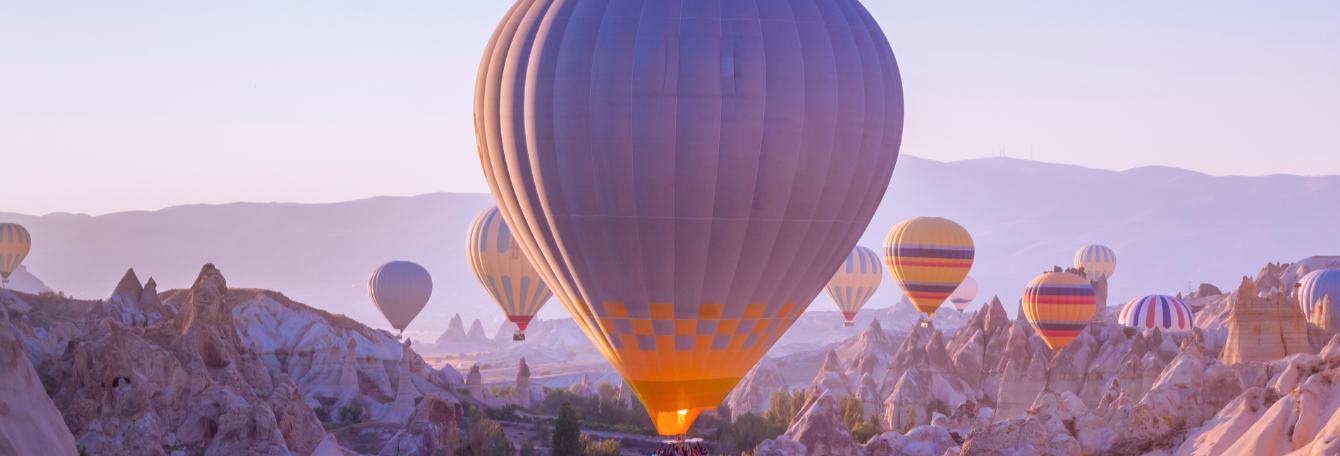Travel in ‘24: Trends Shaping the Consumer Journey
June 12, 2024

It’s tough to keep up with the zigs and zags of the travel consumer journey today – planning travel is a destination in itself for most. Prospective travelers are moving away from the conventional modes of research, they’re altering booking timelines and once they are on the vacation – they are aspiring to do even less. But the travel landscape in 2024 goes far beyond these three emerging trends.
Last month, global communication agency, Citizen Relations, held the ‘Travel in ‘24: Navigating Consumer & Brand Insights’ LinkedIn Live with clients at Emirates and Rocky Mountaineer. The panelists dove into Plus Company’s latest Travel Trends report to understand how brands can cater to the ever-evolving travel consumer.
Let’s dive into the transformative trends reshaping the journey of the travel consumer in 2024.
Social Media For Travel Inspo
Forget guidebooks and travel agencies; today’s wanderers are turning to TikTok and Instagram for information. According to a survey by Tripit, 69% of Gen-Z and millennial travelers seek their next adventure through the lens of social media – even if it means roughing crowds to get the perfect shot. TikTok has emerged as the new travel inspiration powerhouse, seeing a whopping 410% increase in views of travel content between 2021 and 2023.
While social media has been the primary channel for travel inspiration, new research suggests that it has an impact across the consumer journey – from inspiration to consideration and action. Seventy percent of Tiktok users agree that TikTok helps them decide which travel product or activity to choose. And nearly 35% of U.S. TikTok users — or approximately 52.5 million people — have traveled to visit a new destination (city, beach, park, etc.) after seeing a TikTok video about it. In Citizen’s recent LinkedIn Live, Rocky Mountaineer VP, Nicole Ford, mentioned how the company utilizes user-generated content to showcase the real life travel experience.
Social media helps travelers decide where to go, what to avoid, how to venture off the beaten path, or track down fan favourite spots from TV (think: the Bear restaurants in Chicago or the tiny town in Ontario from Schitt’s Creek). Travel brands can win by setting up a diverse roster of creators to help meet the varying needs of travelers and bring nuance to the typical conversation.
A Shift in Planning Dynamics
Instead of meticulous itinerary planning months in advance, travelers are embracing spontaneity. According to Citizen client TripAdvisor’s Summer Travel Index, 56% of US travelers are deciding part of their itineraries based on how they feel “in the moment.” Domestic trips are now orchestrated just three weeks before departure, a 10% decrease in advanced booking time compared to pre-pandemic levels. Similarly, Europeans destinations witness bookings merely eight to nine weeks in advance, a 20% reduction from previous years.
This trend extends to accommodation, with a staggering 55% of hotel bookings on the Hopper app being made for same-day check-ins in 2022. The allure of impromptu getaways is undeniable, reflecting a desire for flexibility, embracing presence over unrealistic expectations, and adventure.
With this new embrace of adventure, consumers are also willing to splurge on adding a bit more luxury to their travel. According to Shaz Peshimam, Country Manager, Canada at Emirates Airline, consumers are now willing to spend a little extra – both money and time – at their layover stops. Instead of booking direct flights to their ultimate destination, Emirates has seen travelers break their journey at the airline’s hub, Dubai, to spend a few extra days in the city.
The Rise of “Slowcations”
In a world perpetually on the move, there’s a growing appetite for leisurely escapades. Enter the era of “Do-Nothing Vacations” or “slowcations,” where the emphasis lies not on ticking off landmarks but on unwinding and rejuvenating the soul. Hilton’s 2024 trend report underscores this shift, highlighting that 21% of travelers prioritize rest and relaxation above all else.
What does this mean for those marketing travel? Aside from cultural and adventure attractions, rejuvenating offerings such as local spa treatments, wellness experiences and opportunities to slow down are no longer part of an alternative itinerary rather an integral part of trip planning overall.
The conversation, however, goes far beyond these trends. Citizen’s LinkedIn Live panelists shared how they address the juxtaposition of travel consumer behavior into their own strategies and how brands at large can accommodate the constantly evolving travel space. Catch the panel on Citizen Relations’ LinkedIn page here.
